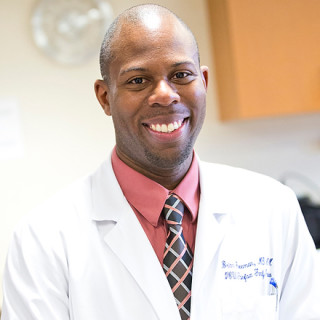Treating patients with substance use disorders has become an enjoyable part of my practice. I became interested in addiction medicine during my previous years as a family physician in a rural community health center. Almost half of my patients come to me for a mental health reason. During my workup, I discovered a large majority of them also had a substance use problem. In trying to do my best for these patients, I developed a niche in addiction.
As a hospitalist, I treat addiction patients in two forms: patients with substance use disorders who are admitted for other medical issues, and in a part-time role at a residential treatment center. I’ve written before about my frustration with the patient-physician relationship, or lack thereof. With addiction patients, however, I can explore their story — how they grew up, what triggered their drug use, and what their motivations and barriers are to treatment. After all, most substance use disorders don’t require significant laboratory testing or imaging. The history, and relationship building over time, are the keys to appropriate diagnosis and treatment.
Therefore, I was surprised to treat a hospitalized patient who abruptly stopped her methadone treatment, and was in opiate withdrawal. Amanda’s addiction story was quite common. She suffered from a herniated disk causing chronic back pain and was prescribed oxycodone by her PCP. The oxycodone, though, not only helped her pain; it made her feel good and have more energy. She had suffered from depression since her teenage years and for the first time she felt “alive.” Unfortunately, these positive effects started to wane, and she required higher doses of oxycodone to achieve the same effect. She started to run out of her medication early and began obtaining prescriptions from different doctors. Eventually, her PCP cut her off, so she found whatever she could from the street. Tired of chasing dealers, she decided to start methadone maintenance at a local drug treatment program.
She wasn’t getting drugs from the street any longer, but now she had to go to the clinic every day to dose and give urine samples. She had to submit to weekly physician visits. Eventually, she started receiving take-home prescriptions, but that freedom came with more urine drug screens, pill counts, and the threat of being dismissed for one missed appointment. Despite all of this, she only felt marginally better than when she was taking anything and everything she could from her dealer contacts.
“So what made you stop your medications so abruptly?” I asked.
She replied, “I am tired of it all. I want to feel normal. It feels like I’m substituting one drug for another.”
I’ve heard this phrase before from addiction practitioners expressing concern for blanket medication prescribing without thought for the individual patient’s needs. But this was different. Here was a woman telling me she felt only a little better with methadone as prescribed by a licensed, trained practitioner than she had buying anything she could off the street. A woman who felt abnormal because she had no agency and was beholden to her prescriber in order to avoid withdrawal.
As I pondered what she said, another thought came to me. Are we really helping patients like Amanda become more self-sufficient, or forcing them to rely on another dealer with a white coat?
I believe it depends on the patient. I’ve taken care of a patient who first came into my office visibly high, who had lost her kids to social services, totaled her car, and stayed in an abusive relationship with her dealer-boyfriend due to drugs. To my surprise, one year later, she was unrecognizable. Well-dressed, clear skin, living in her own apartment with her children, and working a job. What changed? Medication Assisted Treatment (MAT). Medication meant she was no longer dependent on her boyfriend for illicit drugs and could leave. Away from him, she was able to get a job and save money for an apartment. Clean, employed, and with stable housing, she was able to take care of her children.
For each of these patients with positive stories, I have many more like Amanda — essentially unchanged using prescribed MAT or not. The answer to my question depends on the patient and their circumstance. Every addiction patient may not have a positive outcome but everyone deserves at least one chance at redemption. Unlike the street dealer, I’m proud to be affiliated with clinicians who have a genuine interest in seeing our patients improve their lives and livelihoods.
What do you think would help a patient like Amanda in this case? Share your thoughts in the comments below.
Dr. Freeman is a family physician and hospitalist with the Hospitalist Associates of Virginia, as well as a physician at Pathways Residential Treatment Center. He graduated from the University of Louisville School of Medicine and completed a residency in family medicine at VCU/Fairfax Family Practice. Prior to joining the hospitalist group, he was the Director of Adult and Family Medicine at Johnson Health Center and a National Health Service Corp Scholar. His interests include addiction medicine, primary care management of mental health disorders, and patient and family communication. Outside of work he enjoys spending time with his wife and three children, as well as real estate investing. He is a 2020–2021 Doximity Op-Med Fellow.
All names and identifying information have been modified to protect patient privacy.







